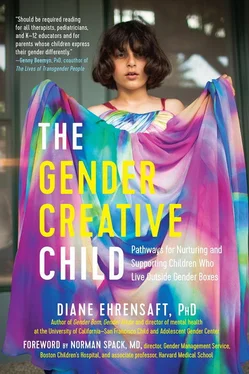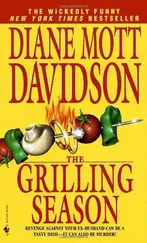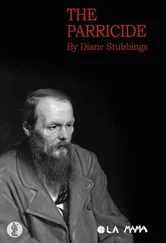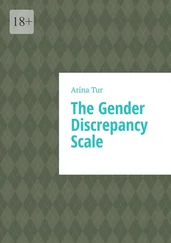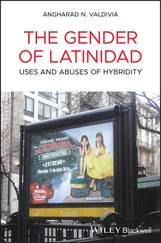Two weeks before the 2014 announcement of Mills College’s new gender policies, The New Yorker published an article titled “What Is a Woman?” So, now a second person was going to enlighten me. Its author, Michelle Goldberg, focused on the conflict between radical feminism and transgenderism. I remember when radical feminism was first surfacing in the 1960s, usually to the tune of “We don’t need the men.” At the time it was overall a separatist movement where men need not apply. But a half-century later, the radical feminists must now deal with an ever-expanding social movement composed of gender-challenging people: transgender women. Astonishingly, rather than being welcomed into the fold for their repudiation of manhood and celebration of their womanhood, transgender women are shunned among certain proponents of radical feminism. Like the Mills College constituency, radical feminists have found themselves tangled up in the discourse of who qualifies as a woman. For them, gender is not about how you identify, it is who you were when you were born. Once born female, you will suffer the social prescriptions, proscriptions, and discrimination that qualify women as an oppressed group. Once born male, you will reap the benefits of male privilege and never truly comprehend the depths of female oppression. Opposing the idea that cisborn women (those whose affirmed gender identity is the same as the female sex assigned to them at birth) should accept trans women into the fold, these radical feminists perceive trans women as simply imposing their male privilege, one that allows them to believe that they are entitled to go where they want and get what they want. [14]I need hardly say what a farfetched concept this is—just ask any trans woman who has suffered dysphoria or discrimination, or lived in fear of violence for most of her adult life, if not her childhood as well. And what about a four-year-old transgender girl who would hardly have had enough time to reap the benefits of male privilege? When Sojourner Truth delivered her speech “Ain’t I a Woman?” at the Women’s Convention in Akron, Ohio, on May 29, 1851, she had no idea that her outcry about her rights as a former black slave from the South would resonate a century and a half later among another group of women—those who were born with an M on their birth certificate. Who would ever have imagined that the contemporary trans cry for recognition, “Ain’t I a Woman?” would be directed at another group of women, self-identified feminists, who are supposed to be representing the release of gender from the grips of oppression?
The finale came on October 10, 2014, with the cover story of The New York Times Magazine , SISTERHOOD IS COMPLICATED, with the subhead, “Men of Wellesley: Can Women’s Colleges Survive the Transgender Movement?” What was Wellesley College to do with their incoming women students who were exiting as men? How will it be able to retain its status as a women’s college when gender is no longer considered binary? [15]This is the dilemma facing the administration of the college, an institution whose very roots were tied to the mission of educating women in a single-sex environment. When single turns to swishy, that mission will definitely have its challenges.
What does this have to with the little people we are talking about in this book? The fashion spread, the college gender policy, the feminist treatise and its pushback all fall under the umbrella of gender as moving boulders rather than bedrock, leaving us with the question “Who are the genders in your neighborhood?” This is no neutral query, but one that is clearly fraught with a high level of emotion and unease, as seen in the disruption in colleges and storefront social movements. It is in the midst of this historical gender tumult that we struggle to get our gender creative children into focus. And that gender tumult filters into the air those gender creative children are breathing as they work to get their own gender in focus. Yet they are not only the recipients of history, they are also its shapers; and as they call out to us, they are forever our teachers, educating us on: (1) What is gender? and (2) What’s my gender?
As people have grown more aware that gender comes in more than two boxes, the gender binary has been replaced by the notion of the gender spectrum, the gender rainbow, and, my creation, the gender web. [16]In each of these, gender is asserted to come in an infinite variety of shapes, sizes, and hues, rather than in just two sizes that fit either one or the other, boy or girl, and too often fit neither. The gender web proposes that gender is a three-dimensional construction and that all children weave their own gender web—based on three major threads: nature, nurture, and culture—to arrive at the gender that is “me.” Nature includes chromosomes, hormones, hormone receptors, gonads, primary sex characteristics, secondary sex characteristics, brain, and mind. Nurture includes socialization practices and intimate relationships, and is usually housed in the family, the school, peer relations, and religious and community institutions. Culture includes a particular society’s values, ethics, laws, theories, and practices. Like fingerprints, no two children’s gender webs will be alike. The same is true for any adult’s gender web as well. But unlike fingerprints, the gender web can alter in myriad ways from birth to death. Gender is not set in stone by age six, as I was taught in my training as a psychologist many decades ago, but can change over the course of a lifetime; so we all, you and I and everyone around us, will always be tweaking our gender webs until the day we die. That is where the fourth dimension of the gender web comes in—time. Gender is not static; it changes over time.
Who should be in control of the gender web? While we are little, to promote our individual gender health—defined as freedom to explore and live in the gender that feels most authentic to us— the only person who should be doing that tweaking is us. If our parents grab the thread of the web from us as we are spinning it, and tell us what our gender has to be, rather than listening to us as we spell out our gender, or rather than watching us do our own creative work, we are at risk of ending up with a tangled knot of threads, rather than a beautifully spun web that shimmers and glows.
Let us take a look at one of these gender webs as it is being spun. Antonio is five years old and lives in a small town in the Midwest. He is an only child. His mother, Satya, is from India; his father, Alfonso, emigrated from Sicily. Ever since Antonio was eighteen months old, he has been pulling Mom’s scarves out of her drawers and wrapping them around his head to make long, flowing hair like Satya’s. As soon as he developed enough language to make sentences, he announced, “Me girl.” (Well, that counts for a sentence in the toddler world.) Alfonso and Satya didn’t make much of Antonio’s antics and thought it was just cute. But in the back of her mind Satya wondered whether the fertility drugs she took while trying to get pregnant might have had some effect on Antonio’s little brain while he was growing inside her. She had also just heard from a relative back in India that one of her cousins had moved to Thailand and was in the process of transitioning from male to female at age thirty-two, soon to have gender affirmation surgery. Could there be some genetic loading?
As Antonio grew a little older, his declarations became more insistent: “I am a girl, and you made a mistake. You gave me a boy’s name.” Satya and Alfonso now took notice. They are very warm and giving parents, both of them equally involved in Antonio’s rearing, and they themselves never bought into the prescribed rigid gender norms of their respective families of origin. It was very important to them that Antonio learn that boys and girls are equal and that there was no such thing as boy or girl toys, just people toys. But growing up in Italy, Alfonso only knew of two genders—male and female. Satya, on the other hand, had had familiarity in her childhood with the Hijra, the third-gender people of India, and had recently gone online to discover that India’s Supreme Court had just recognized transgender people as a third gender, in a landmark ruling. In the words of the court, “It is the right of every human being to choose their gender,” as it granted full legal rights to those who identify themselves as neither male nor female. [17]Yet the small Midwestern town they now lived in did not abide by a court ruling from far away and had little tolerance for children who overstepped their boundaries in adopting the dress, play, or activities that were prescribed for “the other gender.”
Читать дальше
